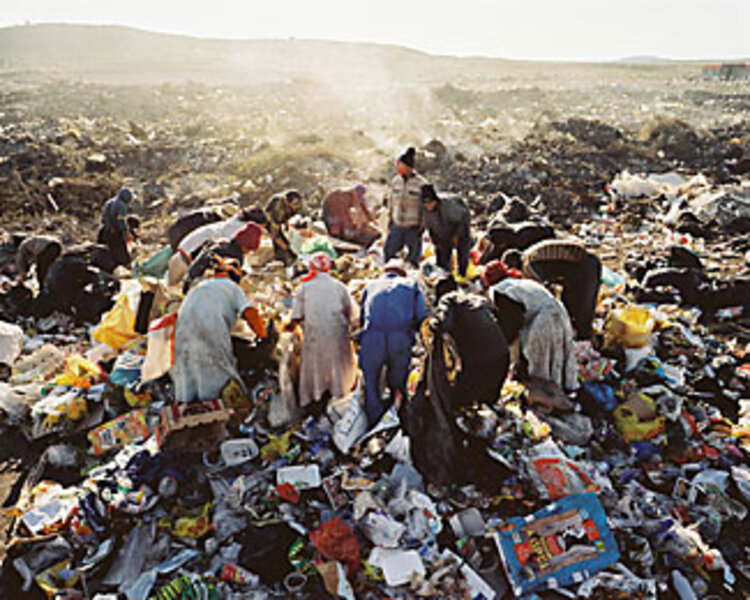The white/nonwhite divide
Loading...
| New York
THE SOUTH AFRICAN photographer Mikhael Subotzky aims his lens at subjects most would avoid. In his exhibition, "Beaufort West" at the Museum of Modern Art through Jan. 5, the 27-year-old focuses on conditions of deprivation and desperation, opening our eyes to a grim social landscape. Subotzky, according to the exhibition's curator Roxana Marcoci, "reinvents the documentary tradition by picturing in unflinching detail the conditions of everyday life in South Africa."
After winning acclaim photographing the shocking conditions of a maximum-security prison, Subotzky spent more than two years training his sights on the small town of Beaufort West. His images, spectacularly refined in technique and unsettling in their power, show the town's nonwhite inhabitants as caged and cornered, whether they're in the town's prison or living in hovels outside its walls. "His approach never relies on politicized reportage," Marcoci says, "yet by critically tapping on the imbalance of power that still resides today, he offers one of the most affecting views of South Africa's life inside and outside the prison system."
Using medium-format color film and only available light, he documents the lives of people like a 19-year-old woman, a sex worker since age 16, who supports her extended family through prostitution. In "Ai 26s Smoke Tik," he shows young gang members, their faces obscured by puffs of methamphetamine. In "Outside Butchery," homeless men sleep in a doorway outside the local meat market, look- ing like dirty carcasses themselves. "Injured Man, Plakkerskamp" highlights the bloodied face of a drunk in a halo formed by the light of a policeman's flashlight, the rest of his sprawled body fading to black.
The most touching shots are those of residents of the town dump, Vaalkoppies, as they form a circle, like vultures, bent over to pick through a mountain of trash for scraps of food. One cannot escape the inference that these human beings have been thrown away by their government, "a truly dystopian vision," Subotzky calls it. As Nelson Mandela has said, "A nation should not be judged by how it treats its highest citizens, but its lowest ones."
Subotzky, in the tradition of documentary photographers like Jacob Riis and Walker Evans, spotlights the environment that contributes to inequality, like racism, poverty, and lack of education. According to the South African Human Rights Commission, Beaufort West, a truck stop in the Karoo Desert, "has not broken away from the shackles of South Africa's apartheid past, [where] economic and social integration is severely limited."
The photographs point to the cause of the crime wave that afflicts South Africa, which has one of the highest rates of incarceration in the world. With 65 to 90 percent unemployment in Beaufort West, theft, violence, drug use, alcoholism, and prostitution are rampant.
South Africa, Subotzky says, is now undergoing a more profound transition than the change from colonialism and apartheid. "The shift," he says, is "from a politics defined by a unified opposition to a colonial regime to one which would ideally be defined by a common cause aimed at the problems of the present." But factionalism, he adds, "has deflected focus away from the many urgent social challenges we face."
His method is to immerse himself in a locale, engage with people one on one, and portray their world with passion and compassion. "Jaco, Beaufort West Prison," shows a prisoner sleeping on a bare bench in the exercise yard. He lies in front of a painted backdrop showing blue sky, while barbed wire at the top casts a shadow downward. The mural disguises the prison walls but offers no outlet to freedom.
While Subotzky shows crime and punishment in contemporary South Africa, his images indict the system more than the individuals who are its victims. The photographer hopes his pictures acquaint his audience with "an experience which is new to them" and "make the viewer look inward and outwards."





